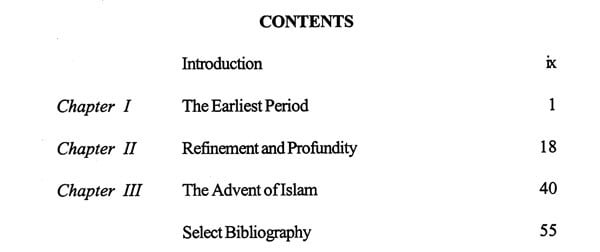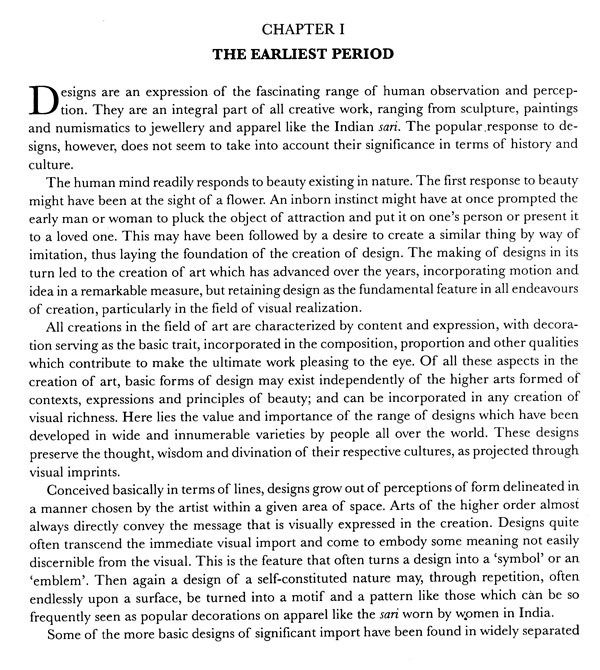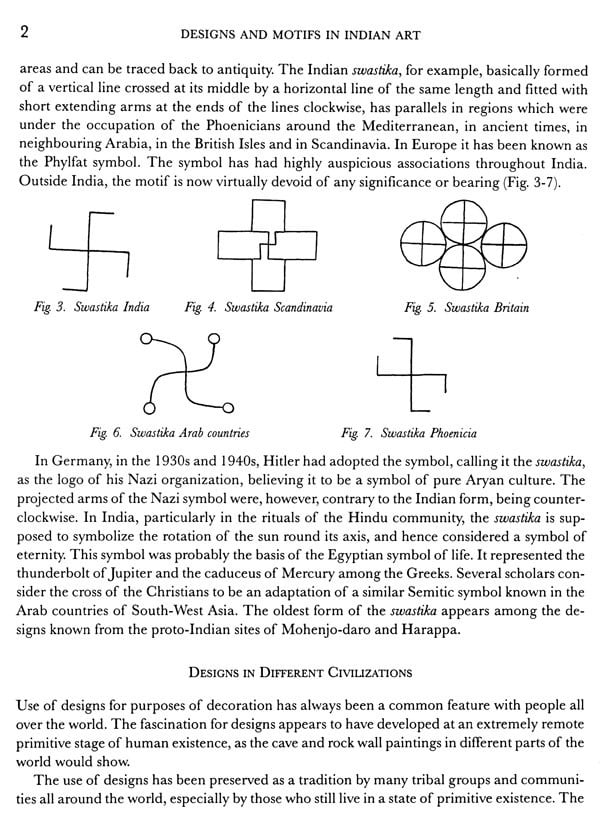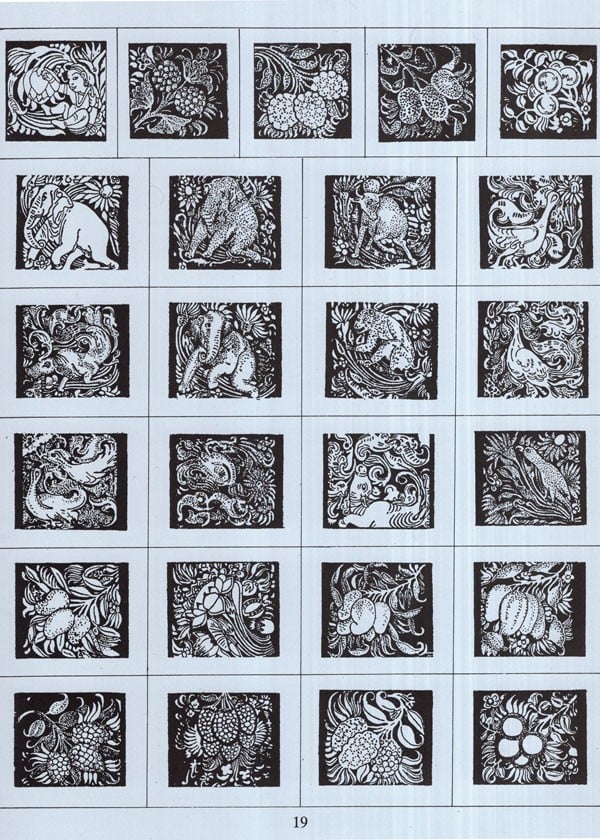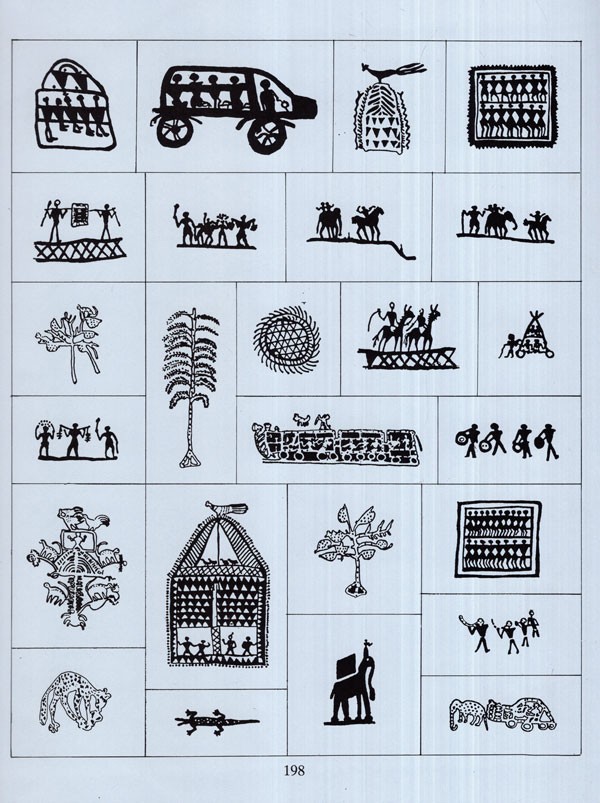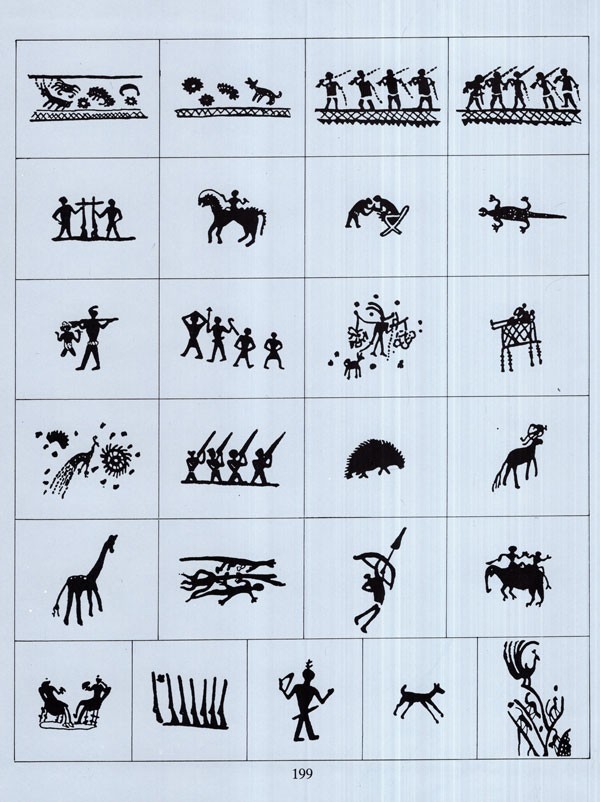
Designs and Motifs in Indian Art
Book Specification
| Item Code: | NBZ877 |
| Publisher: | SHISHU SAHITYA SAMSAD PVT LTD |
| Language: | English |
| Edition: | 2014 |
| ISBN: | 9788186806340 |
| Pages: | 278 (Throughout B/W Illustrations) |
| Cover: | HARDCOVER |
| Other Details | 11.00 X 8.80 inches |
| Weight | 1.45 kg |
Book Description
This book has grown out of an earlier publication Five Thousand Indian Designs and Motifs, which was basically an album. Using the album as his point of reference, Kalyan Kumar Ganguli, the eminent scholar, has now produced a comprehensive study of Indian designs, tracing their evolution and underlining their significance, even as he locates them in an international continuity of traditions. His study covers designs in sculptures, punch-mark coins, icons, decorations, furniture, textile, jewellery, architecture, structural forms, and discovers their roots in the sensibilities of communities spread throughout the country. The sheer range of designs that the book unravels is a treat in itself, and with the insights that the author provides into their symbolism, they should contribute to a closer reading of their significance, and creative exploitation of several of these in contemporary art practice. The book should be of interest to historians and cultural anthropologists too, for the cultural history that emerges out of Professor Ganguli's penetrating analysis of the design themselves. The more than thousands of designs reproduced in the book will be an invaluable source of reference for designers in different fields in India and abroad.
Kalyan Kumar Ganguli (1912-97), Premchand Roychand Scholar, Ph.D. (Calcutta), D.Litt. (Rabindra Bharati), began his academic career in 1945, as a Lecturer in the Department of Ancient Indian History and Culture at Calcutta University, where he later served as Head of the Department of Museology; Officer-in-charge, Asutosh Museum; Director of the Centre for Advanced Studies in Ancient Indian History and Culture; and Bagishwari Professor of Art. He was Honorary Director of the Indian Institute of Art in Industry, Calcutta, 1959-63; and visited the United States in 1957, and Poland in 1968. In his later years, he was closely associated with the Museums Association of India, and the Asiatic Society, Calcutta. His publications include Designs in the Traditional Art of Bengal (1963), Cultural History of Rajasthan (1983). Banglar Bhaskarya (“Sculpture in Bengal,' 1986).
While placing my work before the readers, I would like at the outset to extend my very sincere thanks and blessings upon Sri Debajyoti Datta for providing this opportunity to recapitulate some ideas in the field of designs in Indian art, a subject which has been of great fascination for me for long. I had initially been rather hesitant in accepting the assignment since words and sentences of mine, I often feel, are not up to the mark, due to advanced age and failing health. However, very sincere thanks are due to Sri Samik Bandyopadhyay for having gone through the manuscript and done the needful.
Designs are meant to bring about, in compressed visual layouts, ideas and realisations having widely significant bearings. Development and use of designs in art have been a phenomenon of universal occurrence among people everywhere in the world. :
Originally I had been requested to write a foreword to the reprint of an album entitled Five Thousand Indian Designs and Motifs, collected and published by the late Ajit Mookherji, the then Director of Indian Institute of Art in Industry. This work had been modelled on the well known work, One Thousand Egyptian Designs brought out by the celebrated Egyptologist, Sir Flinders Petrie.
Some time later, as the Director/Secretary of the same Institute, I found that the book was out of stock and arranged for its re-publication. This, however, could be brought out only after I had left the Institute (1963). The speedy exhaustion of the stock provided evidence of its popularity. Its availability once again will, I think, be widely appreciated.
My fascination for designs has been abiding since the time my attention was drawn by my revered Professor Shahed Suhrawardy to Northern Art and the Art of the Nomads of Central Asia, which he had mastered by studying under Borovka and Strygovisky in Russia, the two authorities in the field. Prof. Suhrawardy used to stress upon the strong influence of those art forms, particularly in case of representations of animals in Indian art traditions. As a research scholar under Prof. Suhrawardy, while working on Ancient Indian jewellery as the subject of my research, I had noticed, to my surprise, very close similarity between Indian jewellery motifs of wide variety and those to be found in nomadic art. Note in this respect can be taken of the ornaments known as ananta and makaramukhobala, worn widely by women in Bengal even in recent times on their arms. Such designs are believed to have been influenced by the 'animal art' of nomadic tradition.
**Contents and Sample Pages**
